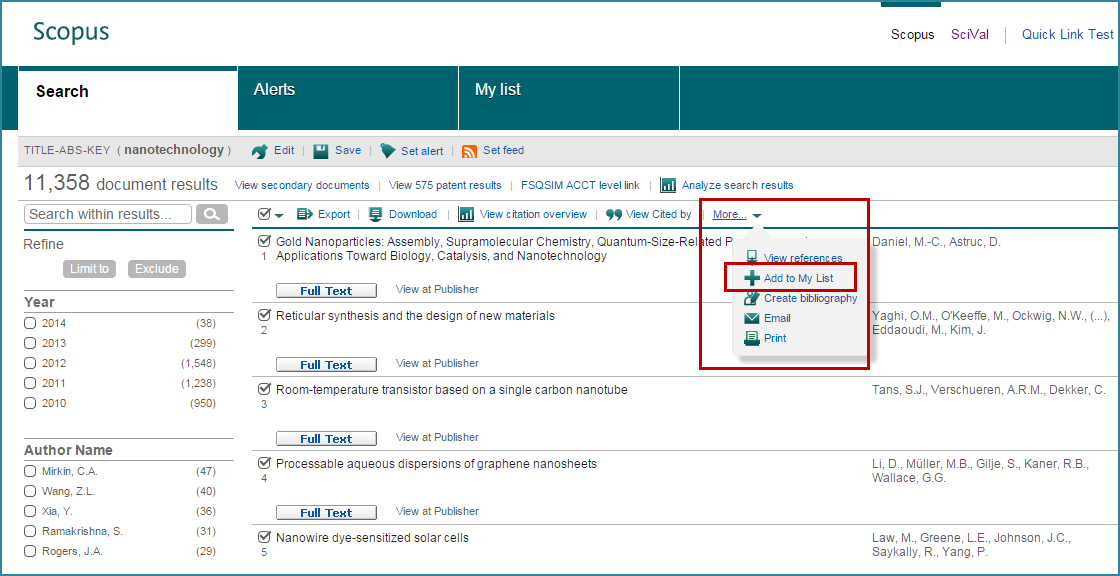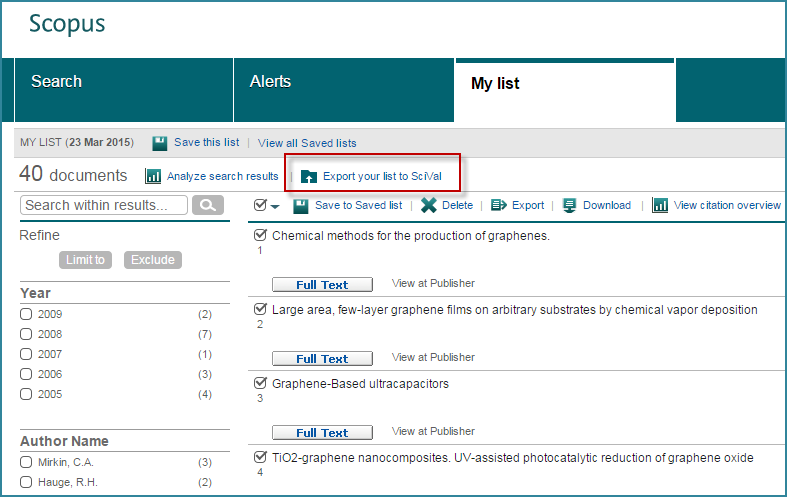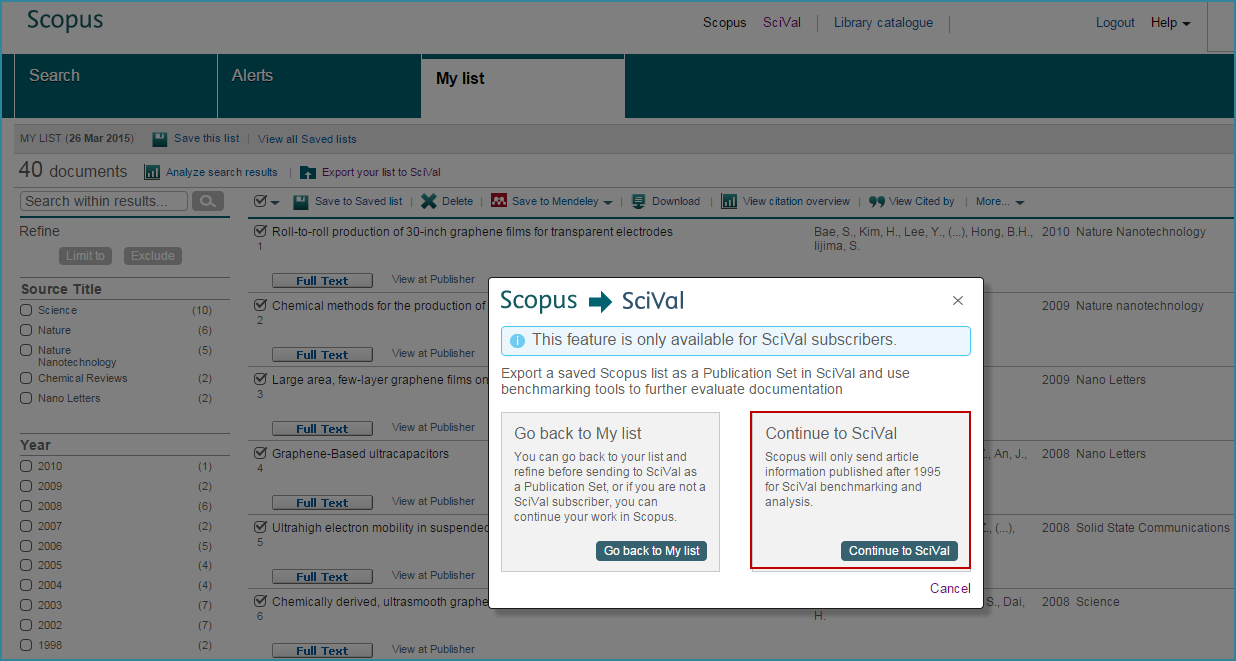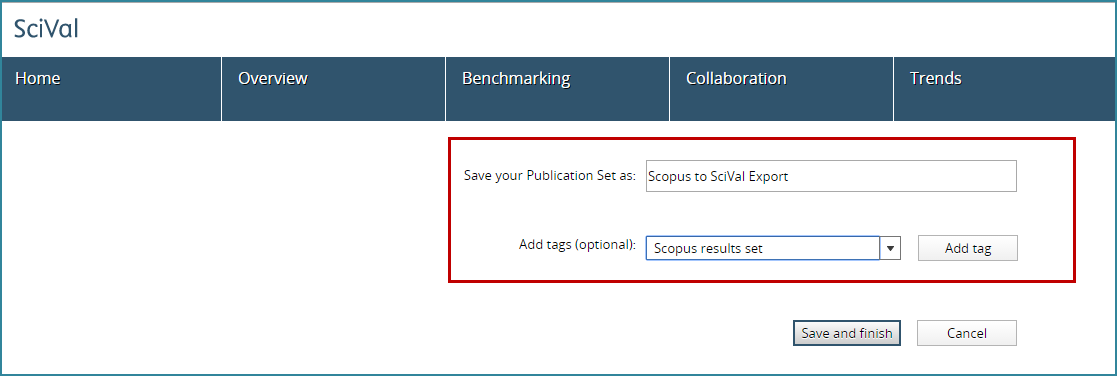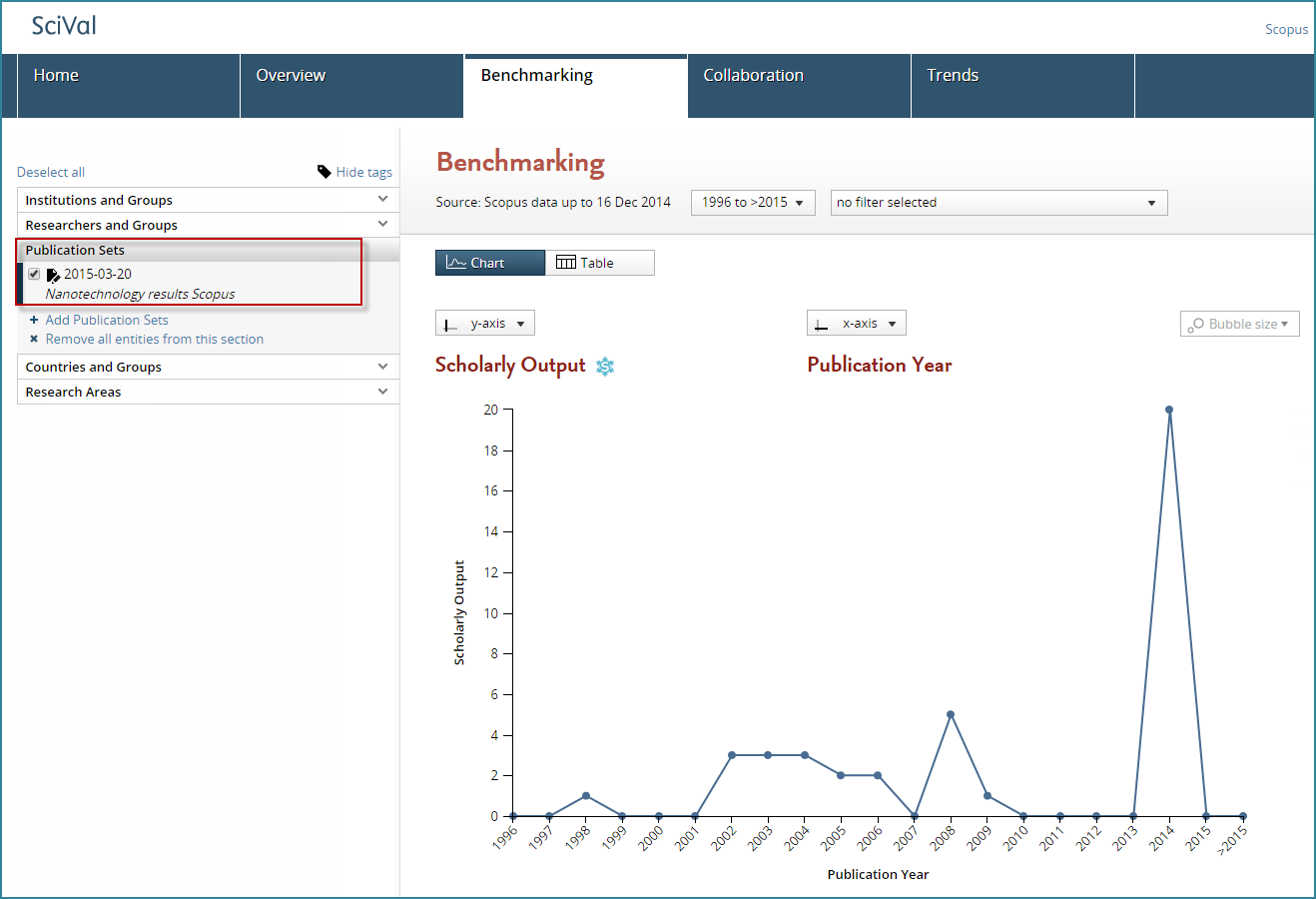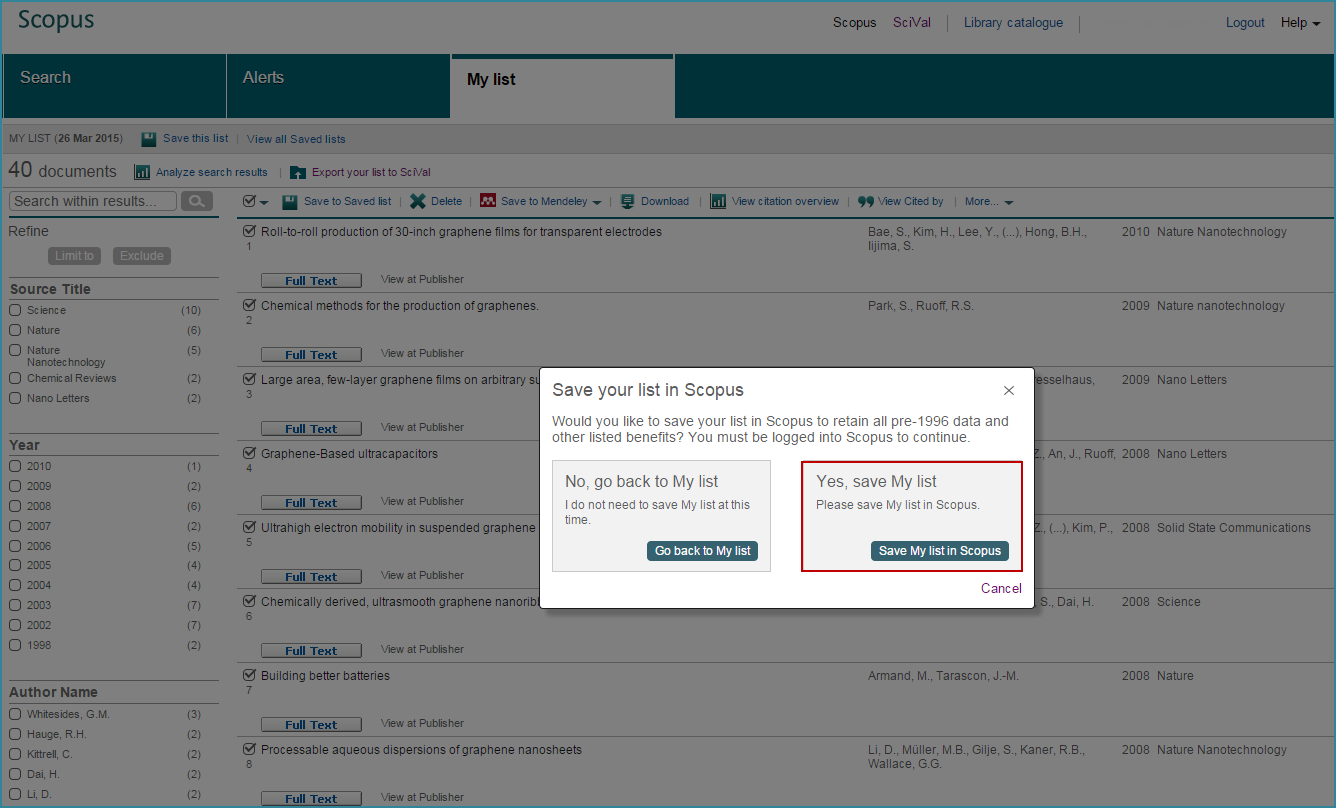Scopus further increases interoperability with SciVal
Instantly evaluate Scopus results in SciVal
On March 25, Scopus added the ability to directly export a list of Scopus documents to SciVal, Elsevier’s benchmarking and analytics product,to enable further analysis.Available to users with access to both products, the ‘Scopus to SciVal export’ feature reduces the number of steps when using the two products together.
This new feature further increases the interoperability between Scopus and SciVal, both products within the Elsevier Research Intelligence portfolio.
Here is how the Scopus to SciVal export works:
Step 1: The user enters a search in Scopus.
Step 2: From the search result page, the user selects the desired documents and adds them to a temporary Scopus list,
by going to the 'More’ option and choosing ‘Add to My list’.
Step 3: From ‘My list’ in Scopus, the user will see the option to ‘Export a list to SciVal’.
Step 4: Once in ‘My list’ the user is able to export the temporary list by clicking on the ‘Export your list to SciVal’.
A pop-up screen will appear asking users if they want to ‘Continue to SciVal’. Selecting this automatically re-directs the user to SciVal.
Step 5: The user now has the option to save the Scopus results list in SciVal.
Step 6: Once saved, this list is automatically added to the ‘Publication Sets’ in the SciVal ‘Benchmarking’ module.
This module provides the user with advanced capabilities to perform further in-depth analysis using the exported Scopus results.In SciVal a ‘Publication Sets’ is a fixed set of publications, which is never automatically updated with new publications
Step 7: Should the user want to export the same set again, an option is given in Scopus to save the temporary list.
Note: The Scopus ‘Export to SciVal’ option can export up to 2,000 documents and can only be used for post-1995 data.
You can share your feedback by emailing Scopus Marketing
Also follow us on Twitter for timely updates.


